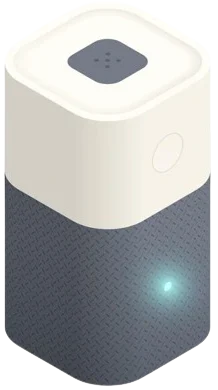Migraines are notorious for their debilitating symptoms, leaving sufferers desperate for any form of relief. In recent years, as we become increasingly aware of the impact of our environment on health, the use of air purifiers has piqued the interest of migraine patients. Can cleaner air really lead to fewer headaches? In this comprehensive exploration, we’ll unpack the science behind air quality and migraines, dissect the efficacy of air purifiers, and arm you with the knowledge to make an informed decision in your pursuit of relief.
Understanding Migraines and Their Relationship to Air Quality
For over 39 million Americans and many more worldwide, migraines are not just headaches; they are neurological events that often come with an ensemble of symptoms, including severe pain, visual disturbances, nausea, and sensitivity to light, sound, and smell. Triggers for migraines are vast and personal, ranging from stress and hormonal changes to diet and environment. Air quality, for example, the presence of particulate matter, allergens, or pollutants, is gaining recognition as a potential trigger.
Particulate Matter and Pollutants
The World Health Organization (WHO) categorizes air pollution as a significant environmental risk factor for health. Particulate matter (PM) is one of the most concerning pollutants, especially the fine and ultrafine varieties that can penetrate deep into the lungs and enter the bloodstream. These tiny particles have been associated with oxidative stress and inflammation, processes implicated in migraine pathophysiology.
Allergens and Sensitivities
For individuals with allergies or sensitivities, airborne allergens can be potent migraine inducers. Pollen, pet dander, dust mites, and mold spores are common triggers, and an air purifier that effectively filters these allergens may offer some respite.
How Air Purifiers Can Combat Migraine Triggers
Air purifiers, powered by science and technology, are designed to clean and sterilize the air we breathe. Typically outfitted with HEPA filters, UV-C light, and activated carbon, these devices promise to reduce levels of not only particulate matter but also microbes and odors.
Types of Air Purifiers
High-Efficiency Particulate Air (HEPA) filters are known for trapping allergens and pollutants as small as 0.3 microns. UV-C light technology, when used in air purifiers, can kill airborne viruses and bacteria. Activated carbon, a type of charcoal treated with oxygen to open millions of tiny pores between the carbon atoms, is effective at trapping gases containing volatile organic compounds (VOCs), another suspect in the migraine mystery.
Air Purifier Features That Matter
When exploring air purifiers for migraine relief, some critical features to look for include:
- Filter Efficiency: Air purifiers equipped with true HEPA filters or a similar high-grade system are most effective.
- Coverage Area: The size of the room the air purifier can effectively clean.
- Air Change per Hour (ACH): The number of times the purifier can circulate the air in the room. Higher ACH means quicker removal of pollutants.
- Noise Level: Particularly essential if you plan to run the device in a bedroom or office during work hours.
The Science Review: Do Air Purifiers Actually Ease Migraines?
To date, scientific consensus on the direct impact of air purifiers on migraines is still evolving. A limited number of studies have investigated this link, with mixed results.
The Research Landscape
A few important research findings include:
- A study published in the Environmental Health and Preventive Medicine journal did find that air purifiers may reduce air pollutants and improve symptoms and quality of life for migraine patients.
- A report in the Environmental Research journal suggested that elevated air pollution could increase the short-term risk of migraine in people with allergies.
- However, larger randomized control trials are lacking, making it difficult to definitively state the role air purifiers may play in migraine management.
Choosing the Right Air Purifier for Migraine Relief
Selecting an air purifier specifically to help manage migraines means understanding your individual triggers and the capabilities of different air purifier models.
Consider the Size of the Room
To get the most out of your air purifier, it’s crucial to match the unit’s Clean Air Delivery Rate (CADR) to the room size. Oversizing is not harmful but under-sizing the purifier could lead to inadequate air cleaning.
Filter Type and Replacement
Look for an air purifier with a filter maintenance schedule that fits your lifestyle. While HEPA filters are famously long-lasting, pre-filters and activated carbon filters often require more frequent replacement to ensure the continued efficiency of the purifier.
Tactics for Effective Air Purifier Use in Migraine Management
An air purifier is most effective when used as part of a comprehensive migraine management strategy. Here are some tips to get the most out of your purifier:
- Placement Matters: Optimal placement can significantly affect the unit’s performance. Avoid corners and walls that impede airflow.
- Running It Round the Clock: Central to air purification is consistent operation. Set it up to run continuously, especially in the room where you spend the most time.
- Maintenance is Key: Regularly cleaning the purifier’s filters and ensuring unobstructed airflow is essential for peak performance.
Incorporating Air Purifiers into Your Migraine Protocol
For migraine patients, air purifiers can be a valuable addition to their arsenal against environmental triggers. While not a panacea, cleaner air is indisputably better for overall health and could provide relief to those who suffer from migraines.
Synergy with Other Strategies
Optimizing your environment with an air purifier is just one piece of the puzzle. Combining it with other proven practices like stress management, adequate hydration, and a balanced diet could lead to a more significant reduction in migraine frequency and severity.
Consistency is Your Companion
The key to success with air purifiers is consistency. Adhering to a strict schedule and maintaining your device diligently will help ensure that the air you breathe is continuously clean and free from potential migraine triggers.
In conclusion, the association between air quality and migraine health is undeniable. While further robust scientific research is needed, there’s enough evidence to support the use of air purifiers as a complementary strategy in managing migraines. For those investing in an air purifier, understanding the technology, knowing the types of filters and features to seek out, and committing to a thoughtful usage routine are pivotal in seeing potential results. If cleaner air can mean one less migraine, then the investment in such a device is a breath of fresh, and clean, air.
Fausto Bhangi, the creator of Iniciar Sesion, has been delving into air purifiers and indoor air quality since 2019. As our chief tester, he oversees all the evaluations we conduct on air quality products. Hence, you’ll consistently find his name associated with our reviews.

